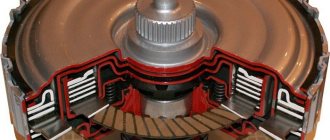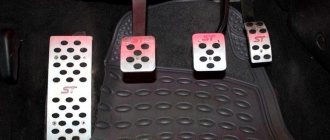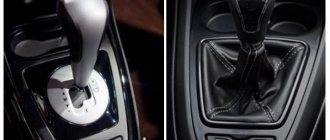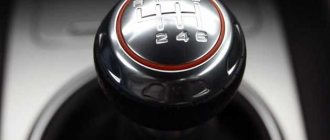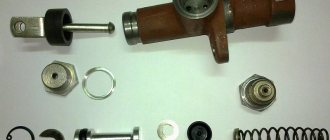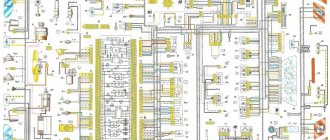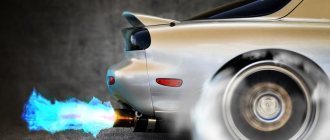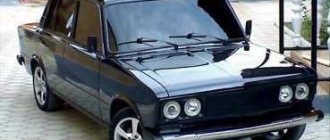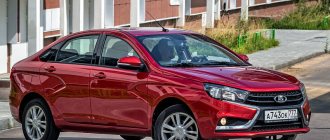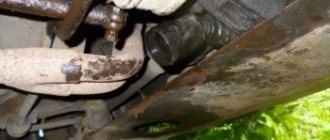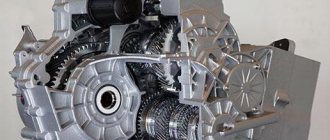History of appearance
This type of transmission was developed by the Frenchman A. Kegresse in the late 1930s. Prototypes of it were built into the Ford Ranger and Fiesta Mk1, as well as the Peugeot 205. The 2003 Volkswagen Golf Mk4 R32 is the first production model to feature such a transmission system.
Volkswagen Golf Mk4 R32
Hyundai introduced the first modern six-speed DCT in 2009. The Veloster model with a 6DCT gearbox was released in 2011. In 2015, the company introduced the Sonata and Veloster Turbo with seven-speed automatic transmissions. In 2016, i30 and Tucson SUVs equipped with such a gearbox went on sale. Some models of Korean cars began to be equipped with a dry double clutch transmission quite recently.
Gearbox 7DCT (GWM 7DCT450)
Haval
Haweil
The Haval brand has shown a crossover with a transmission of a completely new level.
We are talking about a 7DCT preselective gearbox with two clutches, which combines the switching speed of a robot, the efficiency of mechanics and the “indestructibility” of an automatic transmission. And it will be available in Russia! The premiere of the absolutely new Haval F7 crossover took place at the Moscow Motor Show. The stylish new product is interesting not only for its bright appearance or, for example, advanced turbocharged engines, but also for its advanced robotic gearbox with two wet clutches called GWM 7DCT450. This is the first “robot” developed from the first to the last detail by engineers in China! Moreover, the new preselective gearbox turned out to be so successful that within 3 years the manufacturer will completely abandon imported automatic transmissions from ZF, Getrag and Hyundai.
It is enough just to mention that the project of the new robotic gearbox was led by the most experienced German Gerhard Henning, who had previously been responsible for automated transmissions in the Volkswagen Group for many years, and then was the main “transmission specialist” in the commercial and passenger divisions of Daimler. It was under him that Volkswagen made the world's first 6-speed DSG for front and rear wheel drive; light and compact 7DCT and 9DCT “robots” appeared in Mercedes, as well as automatic transmissions of the 7G and 9G Tronic family.
The new seven-speed “Robot” GWM 7DCT450 is not just nimble and smooth. It also has a high margin of safety, as it is designed for an impressive torque of up to 450 Nm. The creators managed to achieve the highest efficiency - more than 95%, which means that the full potential of modern engines is fully revealed - and this means excellent dynamics and fuel efficiency.
In addition to everything, the box turned out to be more compact than its analogues and is immediately 10 kg lighter than similar units, which makes it possible to adapt it for installation in virtually any promising Haweil all-terrain vehicle. The weight of a fully charged unit is only 83 kg, and it uses low-viscosity transmission fluid.
And of course, the GWM “robot” cannot be associated with the notorious analogues of other brands, which at one time were not particularly reliable. The new transmission is devoid of such shortcomings, but has developed oil cooling (operating temperature range - from -40 to +140 degrees) and a lifespan declared by the manufacturer as much as 300,000 km. Impressive, right? This means that the unit will serve properly throughout the entire life of the vehicle. More than 1,000 crossovers were involved in endurance testing of the “robot” and fine-tuning, which covered a total of 7.5 million km in a variety of road and climatic conditions in China and Europe.
Why does the Haval brand rely on “robots” and not classic automatic transmissions or CVTs? Firstly, with the right approach to design, preselective gearboxes with wet clutches are no less, if not more, reliable than other types of transmissions. Secondly, they are practically devoid of the disadvantages of a classic automatic transmission - increased fuel consumption and slowness of operation, but at the same time they demonstrate smooth “seamless” gear shifts and really reduce fuel consumption. Finally, “robots” are actually ideal for interacting with hybrid components, which are becoming a trend in the global auto industry.
And the most important thing is that Russian car enthusiasts will also get experience interacting with the new GWM 7DCT450 transmission. New Haval models equipped with it, including the sensational fashion crossover Haval H7, will be produced at the company’s newest plant in the Tula region in 2022.
Source
Working principle of DCT
Cars with a manual transmission require the driver to depress the clutch using the pedal, change gears, and then depress it again. Automatics usually handle switching independently thanks to a torque converter. A DCT has at least two clutch discs - one for even gears and one for odd gears. The two shafts of such a transmission are located coaxially. The primary shaft is responsible for the first gear, the secondary shaft for the second. A pair of clutches is responsible for the torque. When an electronic clutch signal is received, one of the shafts is rotated. To change gear, one clutch is disengaged and the other is engaged. The system prepares the next gear in advance, making it shift very quickly. More powerful vehicles require a wet clutch. “Dry” robotic gearboxes are more common and also have a number of advantages, but are prone to overheating.
Operating rules
The robotic transmission, contrary to rumors, is a fairly reliable design. However, like any other mechanism in the world, even the most reliable mechanism has its own operating characteristics. If you do not take these features into account, then it will not last long, and vice versa, if you act according to the manufacturer’s recommendations, it will delight you with uninterrupted and efficient operation for a long time. Let's get to know them.
- The presence of electronics requires periodic cleaning of contacts. It is also recommended to replace the coolant to prevent overheating. Most often, according to regulations, such work is carried out every 50 thousand km. Usually they require disassembling the box, and only a professional craftsman can do this.
- To reduce the natural wear of the mechanism, drivers are recommended to fix the gearbox in the neutral position during any stops and parking lots, including at traffic lights.
- A dry clutch usually fails faster when the driver makes frequent and sudden maneuvers. If the car owner prefers aggressive driving, then he will most likely have to replace the electronic control unit, which most often overheats and ceases to perform its functions after 40 thousand kilometers.
- A closed clutch is more reliable from the point of view of active driving and is not subject to overheating. However, tiny particles of metal debris inevitably get into the oil, which contaminate the system and external filter. To avoid malfunctions, you should change the filter and oil every 50 thousand km.
- Google+
- LJ
- Blogger
Rice. 4 Dry clutch cross-section
- Google+
- LJ
- Blogger
Rice. 5 Cutaway view of wet clutch
Pros and cons of Korean “robots”
Modern “robots” are more economical in terms of fuel consumption than manual transmissions or standard automatic transmissions. Their use makes high-performance cars significantly faster.
Advantages:
- ease of operation;
- fuel efficiency;
- switching speed.
Dual Clutch Transmission
With the help of such a gearbox, gear shifting can be carried out more smoothly than with an automatic transmission or semi-automatic transmission. But the smoothness of the ride can only be appreciated by drivers who have learned to handle the “robot”.
Flaws:
- heaviness and large size;
- high cost of maintenance.
000-Kia-Ceed-zr11-15
Will they really take away our automatic and naturally aspirated engines? Everything is lost! As soon as the first rumors about the restyled Sid appeared, Russian Internet forums began to shake. Koreans hastened to calm down the network “seismic activity.” This year, the Korean golf class, according to the company's own data, occupied 13.8% of the segment in our country, and cee'd is the second most important model after Rio. Therefore, there are no sudden changes that could affect sales - only evolution.
The most popular 129-horsepower 1.6-liter engine in Russia and a six-speed hydromechanical automatic transmission are still in service. The base 1.4 engine (100 hp) of the new Kappa family differs from the previous one, of the same volume, in a more “torque” character. The only turbo engine, as before, is the 1.6 T‑GDi with a power of 204 hp. — it has a new turbocharger, but the cee'd GT is only one tenth of a second faster in the acceleration to 100 km/h.
DSG and DCT
Direct Shift Gearbox is a trademark. The DSG robot clutch can be:
- dry (Skoda Rapid, Polo GT, VW Golf);
- wet (Skoda Octavia RS, Volkswagen Golf GTI).
Skoda Kodiaq crossovers or VW minivans are now equipped with a seven-speed Direct Shift Gearbox with two wet clutches. DCT is essentially a kind of analogue of the DSG gearbox from VW.
Direct Shift Gearbox
When comparing DCT and DSG, only small differences can be identified. In both cases, the car starts smoothly, but in sport mode, as a rule, Direct Shift Gearbox performs better. On the other hand, parking is easier with Dual Clutch Transmission. If we compare, for example, Polo and Ceed with “robots”, then the “German” starts faster, and the Korean car does it more smoothly.
Korean transmissions have better gear shift speeds (BMW's DCT M Drivelogic - 1/10 of a second, Volkswagen's DSG - 2/10 of a second).
Korean transmissions have better gear shift speeds
Repairing a seven-speed Korean system will be very expensive. Today its minimum cost is about 25,000 rubles, but the amount of 300,000 rubles announced for repairing the “robot” may well be real. Adapting the transmission will cost 3,000–4,000 rubles, changing the oil will cost approximately the same amount. The cost of replacing a hydraulic unit is from 5,000 rubles.
General information
The main difference between a robotic gearbox and an automatic transmission is its design. The design of an automatic transmission is a mechanism of several gears, each of which is a speed stage.
These stages change each other using oil pressure and engine speed. Accordingly, the gears change each other when the driver increases pressure on the accelerator pedal or decreases speed.
This is a rather expensive system to maintain, which during operation consumes more fuel compared to a mechanical one.
The robot gearbox is designed differently. In essence, this is a traditional gearbox with a clutch and the usual gear shift system, but equipped with a special electronic unit that controls the clutch instead of the driver.
WATCH THE VIDEO
Transmissions of this type are widely used in regular passenger cars and super sports cars. What is the difference between a robot and an automatic machine in practice? Firstly, smoother switching. Secondly, in most cases, it is possible to switch between two modes: automatic and semi-automatic. The first of them takes control of the shifts completely, and the second allows the driver to make shifts, but not with the help of the usual clutch pedal, but with just one press of a button.
- Google+
- LJ
- Blogger
Rice. 2 Diagram of the functioning of the “double clutch” mechanism
Automatic transmission replacement cost
As I already said, replacement with a contract one will cost more. Therefore, if the Sid automatic transmission is in faulty condition, then it is better to do a complete restoration than to buy a contract transmission.
Because you don’t know what it is like, maybe it was drowned and then restored. In any case, it won't work for long. And you already know your automatic transmission well. Replacing parts even in full will cost you less.
Write in the comments whether you have already done a major overhaul of Sid or bought a contract box? How much did it cost and how long do you drive it?
Reviews from Hyundai car owners
Car manufacturer Hyundai is installing 7DCT robots on the i40 and Tucson models. In the future, it is planned to expand the model range. Let's find out what problems fans of these cars have to face.
Fedor, 39 years old, Hyundai i40, station wagon
Probably the most compelling argument in favor of a robotic gearbox for me was fuel consumption. And here the manufacturer tells the honest truth, the consumption is really pleasant. Considering that I travel a lot, I manage to save a lot.
It’s difficult for me to judge the acceleration dynamics, because I have never driven the same car with a different transmission. But my subjective opinion is that at the beginning of the movement the dynamics are a little lacking. But there are reserves for overtaking on the highway. In general, the movement is quite comfortable, but that’s where the pleasant moments end.
When the box began to twitch, unpleasant sensations appeared when starting to move; the mileage was only 55 thousand. I thought it was some kind of trifle, because the car is new! I calmly went to the service center and left the car for diagnostics. I was sure that the repair would not take much time and would be carried out under warranty, but I was wrong.
To say that I was shocked when I was informed that the clutch had worn out would be an understatement! This is not a cheap car, and I’m not a novice driver who drives a manual and doesn’t know how to use the clutch correctly. It turned out that replacing the clutch was not a warranty case, so I had to bear considerable repair costs. In short, among all the cars I've ever owned, this one holds the record for the rate of clutch wear, and for the cost of repairs too.
Pavel, 43 years old, Hyundai Tucson
I wanted a powerful car, so I chose the version with a turbocharged engine. At first I doubted that the 7DCT “robot” would be able to unleash all the resources of this engine, but during a test drive I was convinced that it could.
Of course, I heard about the unpleasant features of the “robot”, but the car is under warranty, and besides, I live outside the city, so I rarely get stuck in traffic jams. I hope that in such conditions the box will serve faithfully. Indeed, on an empty road the car demonstrates decent dynamics, but I don’t remember that the gears are changed periodically.
A couple of times I found myself in a long jam in the city center. The car showed with all its appearance that it didn’t like it! The smooth ride I loved disappeared after 10 minutes, and once an overheating warning even appeared. I don't like traffic jams either, so this car suits me, but for those who have to crawl from traffic lights to traffic lights, I definitely don't recommend the 7DCT.
I've driven almost 90 thousand, so far everything is smooth. I like the car, so I wish it many more kilometers. A robotic transmission is a good solution, but it seems to me that it will not last long in a metropolis.
003-Kia-Ceed-zr11-15
In Western Europe, the updated cee'd is also offered with a 1.0 T‑GDI three-cylinder turbo engine producing 120 hp. The liter unit of the Kappa family with direct fuel injection was first presented at the March Geneva Motor Show. Its main highlight is the twin scroll compressor, integrated into the exhaust manifold, which allows the converter to work more efficiently. As a result, the engine emits less CO 2 into the atmosphere than a 1.4-liter naturally aspirated engine. The modernized 1.6 CRDi diesel engine (136 hp), which is paired with a DCT robot, is also popular among Europeans.
001-Kia-Ceed-zr11-15
The box was configured so that its behavior was similar to that of an automatic machine. And the Koreans did it! At low speeds, when going down a gear, a slight jerk is felt, but if you switch the selector to sport mode, it disappears. The five-door cee'd is peppy, the gas pedal is no longer as dampened as before. The suspension remains structurally the same, but the settings have been changed. Cee'd has become faster and more composed in turns, the steering wheel has a clearer “zero”. And imagine, Sid now has something that Korean cars often lack - character!
I remember that the fighting qualities of the pre-restyling three-door quickly crumbled as soon as uneven asphalt appeared under the wheels (ZR, 2013, No. 8). The updated car handles potholes better, although course nervousness has not completely disappeared.
The interior, apart from the little things, is the same, only new options have appeared. Navigation will pave the way around traffic jams, the parking attendant will park the car both parallel and perpendicular, and an assistance system has been introduced when leaving a parking lot in reverse, warning about the movement of other cars. A blind spot monitoring system and heated washer nozzles and windshield have been added.
In general, there are much more technical innovations than visual ones. Now cee'd performs almost on an equal footing with Focus and is hot on the heels of Golf. Will he be able to overcome them? I'll answer when we do a comparison test.
PLUS: The new engine added emotions; no extra charge for metallic painting; new options have appeared
MINUS: Cee'd is less nervous on uneven asphalt than before, but still needs some work on the settings
